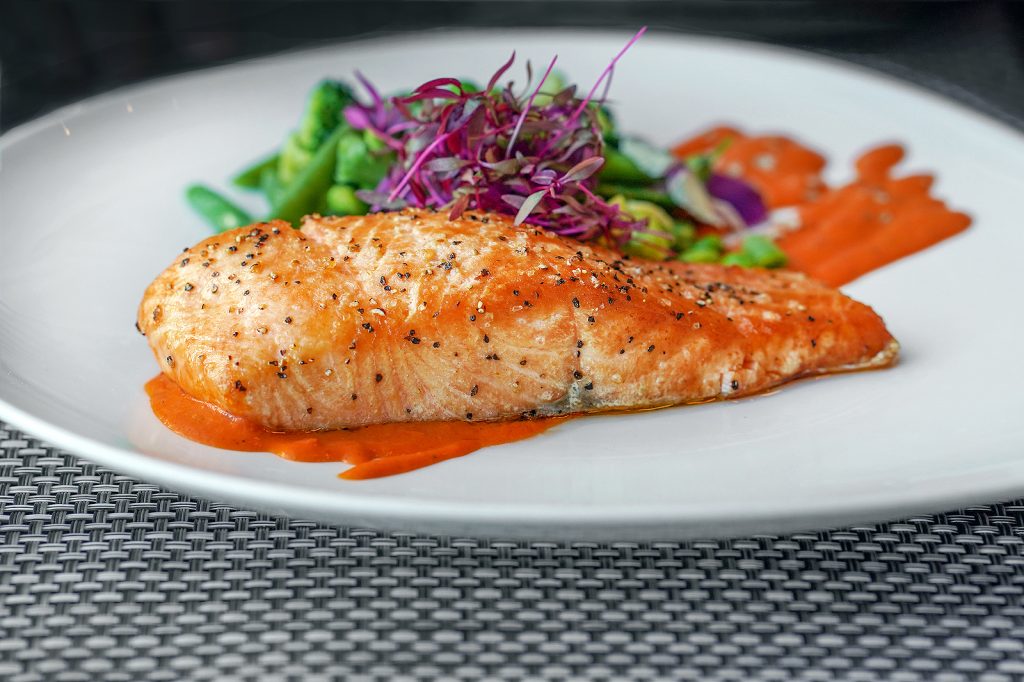
Fish is a high source of protein and other nutrients essential for pregnant women as it helps in supporting a healthy fetal, infant as the child develops. Mixed concerns to avoid eating fish during pregnancy are not new. Over the years, health experts have explained both the benefits and ill effects of eating fish. Serving one portion of fish is not likely to pose any threat, but the ones that are high in mercury should be avoided. Mercury exposure has been linked with severe health problems.
Mercury is a heavy metal released in the environment in several ways. It gets collected in oceans, lakes, and streams as well. Mercury then turns into methylmercury, a neurotoxin found in different fishes in at least small quantities. Methylmercury, if consumed in large amounts, is toxic to the human nervous system. (Jane 2018)
However, mercury found in fish may not affect everyone the same way. The high-risk population includes pregnant women, breastfeeding mothers, and young children. So, caregivers and pregnant women should take extra precautions while choosing which fish to eat and avoid. Fishes like salmon, tuna, sole, catfish, shrimp, scallops, mullet, oyster, etc., are good choices. (Jane 2018)
Remember to limit eating white (albacore) tuna and tuna steaks to 6 ounces (170 grams) a week.
Can Pregnant Women Eat Fish?
Yes. The Food and Drug Administration (FDA) recommends pregnant women, breastfeeding mothers, and women planning pregnancy to eat fish in limited portions. As part of a healthy eating pattern, eating fish provides heart health benefits and lowers obesity.
The 2015-2020 Dietary Guidelines for Americans recommends:
- Pregnant women or breastfeeding mothers to consume between 8 and 12 ounces of seafood per week, from choices that are lower in mercury.
- At least 8 ounces of low mercury seafood (less for young children) per week based on a 2,000 calorie diet
Avoid Having Fish High in Mercury
Mercury content found in fish and other seafood depends on the type of species and pollution level in and around its environment. The giant-sized and long-living fishes tend to carry maximum mercury levels. Mercury levels in fish are measured as parts per million (ppm).
The larger ones eat many small-sized fishes that contain small amounts of mercury inside them. Over the period, its starts accumulating and is not easily eliminated from their bodies. The whole process is called bioaccumulation. (Jane 2018)
Suppose people, especially pregnant women continue to eat fish high in mercury. In that case, it starts collecting in their bloodstream over time and could damage an unborn child’s brain development and nervous system.
And, whatever the breastfeeding mother eats passes through to the baby. For that same reason, it’s advised to continue the safe eating policy throughout the time you are breastfeeding.
The latest FDA and EPA suggest avoiding these four types of fish if you are pregnant or nursing.
- Swordfish: 0.995 ppm
- King mackerel: 0.730 ppm
- Bigeye tuna: 0.689 ppm
- Marlin: 0.485 ppm
(FDA 2020)
Other Precautions for Seafood During Pregnancy
Apart from avoiding eating fishes like orange roughy, tilefish, and shark to reduce your exposure to high mercury, consider these precautions with fish throughout your entire pregnancy or nursing.
- Do not eat uncooked fish items like sushi, sashimi, or shellfish like oysters. They may contain harmful bacteria or viruses. Skip eating refrigerated raw seafood labeled lox, nova style, kippered, jerky or smoked.
- Cook your seafood meal properly. Maintain an internal temperature of 145F (63C) while cooking. The fish, when it’s cooked, easily separates into flakes and appears opaque. When you are working with shrimp and lobster, cook until the flesh is pearly and opaque. If clams, mussels, and oyster shells don’t open during cooking, discard them.
- Pay attention to local advisories if you are eating fish from the local water. If there is no advice, limit the fish consumption from local waters to 6 ounces (170 grams) a week.
(Mayo Clinic 2019)
Informed and Ready to Eat Fish
Don’t be afraid to eat fish. It is healthy when consumed in the right proportions and type. Omega-3 present in good fishes can promote a baby’s cognitive development and the nervous system. As long as you avoid eating fish with high mercury or contaminated with pollutants, seafood can be a regular part of your healthy-eating plan during pregnancy. Follow the steps to maximize the benefits and speak to your medical professional for further guidance.
Works Cited
Jane, Mary. “Should You Avoid Fish Because of Mercury?” Healthline, 14 Sept. 2018, www.healthline.com/nutrition/mercury-content-of-fish.
FDA, Center for Food Safety and Applied Nutrition. “Advice About Eating Fish.” U.S. Food and Drug Administration, FDA, 29 Dec. 2020, www.fda.gov/food/consumers/advice-about-eating-fish.
Mayo Clinic, Staff. “Pregnancy and Fish: What’s Safe to Eat?” Mayo Clinic, Mayo Foundation for Medical Education and Research, 13 July 2019, www.mayoclinic.org/healthy-lifestyle/pregnancy-week-by-week/in-depth/pregnancy-and-fish/art-20044185.
